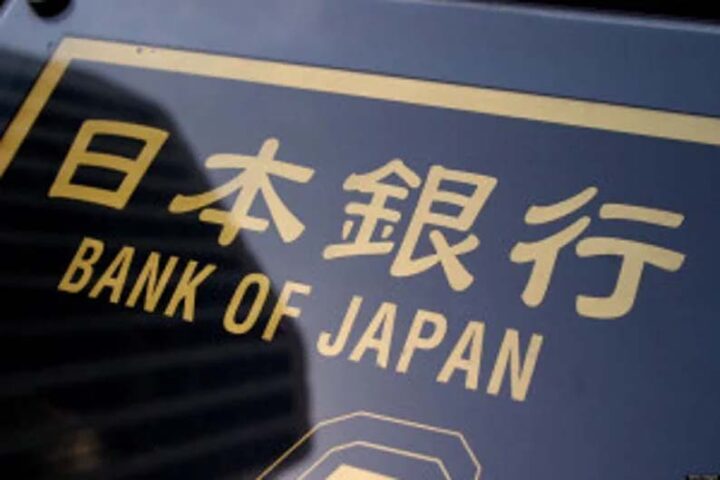By Jeffrey Halley
US markets got little solace, but more clarity, from the FOMC minutes overnight; the committee members remained highly focused on culling inflation, even if it was at the expense of a sharp economic slowdown.
For July’s meeting, a 0.50% to 0.75% Fed Funds rate hike was most likely. The minutes touched on the need for credibility and as such, I believe there will be no wimp-out by the FOMC at the end of this month, as that would achieve exactly the opposite plus interest.
That was enough to shift the US yield curve higher although most of the gains were in the two-year tenor which closed back at 3.0% overnight. Ominously, the inversion widened to around eight basis points to the 10-years which finished at 2.92%. Clearly, the Street remains on recession watch, and that sentiment will only increase if the inversion across the 2s/5s/10s part of the curve increases.
Still, the US continues to deliver a mixed bag of data although the positive releases seem to be generally showing as a series of lower highs.
The ISM Non-manufacturing PMI for June edged lower from May, but still posted a healthy 55.3, with the business activity and new order sub-indexes also healthy. The employment sub-index slumped to 47.4, contractionary territory. The US Jolts Job-Opening data for May also slowed modestly, but still came in at an impressive 11.254 mln job openings, not the stuff of recessions. Still, May seems like a long time ago now and much has changed.
The US data and another night of slumping oil prices saved the equity market’s bacon overnight.
European stock markets had a huge up day, reversing Tuesday’s losses after the Norwegian government stepped in to impose a settlement on both sides of the oil workers’ strike.
Wall Street could only manage a sliver of modest gains though, in the face of hawkish FOMC Minutes, a soaring US Dollar and rising US bond yields which also continued pricing in a recession.
The Minutes and solid US data also propelled the US Dollar to another series of powerful gains across the currency space, boosted by higher US yields.
The big loser was gold which met my next downside target within one day and now threatens long-term support.
Despite more credit implosions in the crypto space as the reality of concentration risk in a lending portfolio hits home to those bright young things, Bitcoin has clung to the $20,500.00 region, although it can probably thank its Nasdaq correlation for that.
Oil prices crashed a further 5.0% overnight, with Brent crude dipping below $100.00 a barrel at one stage. The wipe-out still looks to be very much driven by a culling of speculative longs and trend-following fast money, with nothing changing materially in the real world vis-à-vis the supply/demand imbalance.
One part of the world loving the price slump in oil is Asia’s Caligulas of energy importing: Japan, China, South Korea and Taiwan. I expect India to feel the same warm afterglow later in the day.
Equity markets in the first four are rallying powerfully Thursday as Brent nibbles at $100.00. Oil is rising in Asia as physical buyers jump in to fill their boots with this mid-year Christmas present.
The news isn’t so good from China where the announcement of incentives to buy more electric cars has been tempered by rising Covid19 cases in Beijing and Shanghai. Tokyo’s local government is also considering new restrictions, but the impact has been non-existent.
In China, fears over renewed restrictions in Beijing and Shanghai are tempering the oil-induced rally.
Markets will be focused on German Industrial Production for May Thursday afternoon, and then US ADP Employment in the evening, from which they will try to derive bad guesses on Friday’s US Non-Farm Payroll release.
Asia buys oil after another overnight slump
Oil had another volatile session overnight as hawkish FOMC minutes and recession fears prompted more long liquidation and attracted algo-driven momentum sellers.
Brent crude tumbled by 4.80% to $99.75 a barrel in another mind-boggling session. WTI tested $95.00 intraday, before gaining back some losses to finish 2.80% lower at $98.10.
In Asia, the lure of $100 a barrel of Brent has proved an irresistible lure to physical buyers, and oil prices have rallied Thursday. Brent is 1.70% higher at $101.45 a barrel, while WTI has climbed by 1.20% to $99.20. This highlights the disconnect between the speculative market on the futures exchanges, and the reality of the physical market where futures contracts remain heavily in backwardation, signalling immediate oil supplies are as tight as ever.
The failure of the 2022 support lines on both contracts so comprehensively must be respected, as are looming recession risks around the world. But with Russian oil supplies set to drop as the year progresses and it runs out of western parts to maintain fields, and with the rest of OPEC hopelessly uninvested in maintaining production capacity, I fear the days of $100 oil will be with us for some time yet.
Brent has resistance at $106.00 and then its 2022 trendline at $108.85, followed by the 100-day moving average (DMA) at 110.30. It has traced a double bottom at $98.60, followed by the 200- day moving average (DMA) at $96.35. WTI has resistance at $102.00 and then its 100-DMA at $107.00. Support is at $96.65, $95.00, and then its 200-DMA at $93.50.
Gold in trouble
The continuation of US strength overnight, and high US yields, delivered another kidney punch to gold which slumped ponce again, falling 1.45% to $1739.50 an ounce. In Asia, the shorter-term oversold technical picture sees a modest 0.45% bounce to $1746.00.
Since breaking $1780.00, gold’s technical picture has deteriorated rapidly, and it is clear it remains at the mercy of the US Dollar’s direction. The only positive note is that its RSI has fallen into oversold territory, allowing for a modest corrective rally to occur.
Gold has resistance at $1780.00, $1785.00, and $1820.00, its downward trendline. Support is at $1720.00, followed by $1675.00. Failure of longer-term support at $1675.00 sets in motion a much deeper correction, potentially reaching $1500.00.
Jeffrey Halley is Senior Market Analyst, Asia Pacific at OANDA
Opinions are the author’s, not necessarily that of OANDA Global Corporation or any of its affiliates, subsidiaries, officers or directors. Leveraged trading is high risk and not suitable for all. Losses can exceed investments.







